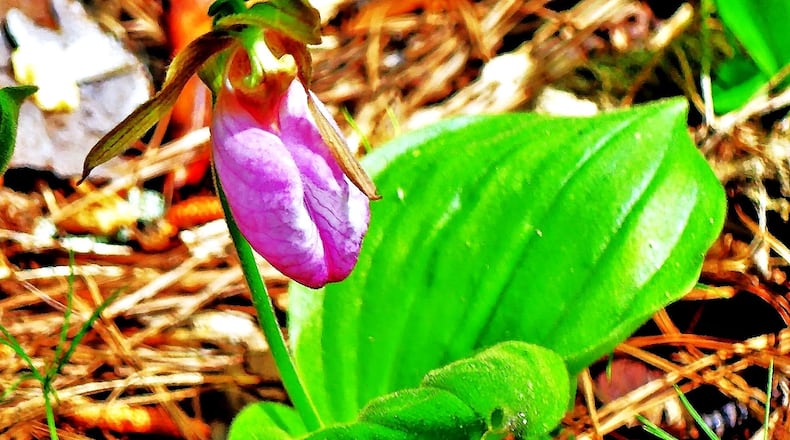The spring-blooming pink lady’s slipper, a native orchid, is one of Georgia’s showiest and most strikingly beautiful wildflowers. It’s also a protected species under the Georgia Wildflower Preservation Act of 1973.
Last February, however, a huge patch of more than a thousand pink lady’s slippers faced destruction by bulldozers as part of an upcoming state road construction project along Ga. 400 in Alpharetta. The state Department of Transportation — as required by state law — had notified the Department of Natural Resources that the lady’s slippers would perish if the plants weren’t dug up and moved to safe locations.
But there were not enough DNR workers to handle such a huge task, so senior DNR botanist Lisa Kruse asked for additional help from Georgia Botanical Society members. Responding was a cadre of volunteers armed with shovels, trowels, rakes and other digging tools.
Over several days, they carefully dug up hundreds of the sensitive flowers along with large “root ball” clumps of soil and leaf litter surrounding each plant. The dug-up plants and their soil were placed in cardboard boxes and hauled to four protected preserves where they were transplanted.
The rescue was declared mostly successful when some 70% of the transplanted wildflowers bloomed in late spring.
Transplanted pink lady’s slippers usually have a dismal survival rate. In their native habitats, they form a symbiotic relationship with a soil fungus crucial to their survival. Without the fungus, they die. That’s why it was important for the rescuers to keep the soil — and the fungus — around each lady’s slipper intact.
The workers, however, didn’t get all of the plants during the first rescue effort in February, so some of them returned to the DOT site just after Thanksgiving to save the rest. “We think we got them all this time,” said volunteer Clayton Webster of Decatur. “Our reward will be when they bloom in spring.”
IN THE SKY: From David Dundee, Tellus Science Museum astronomer: One of the year’s best meteor showers, the Geminid, is expected to peak at about 50 meteors per hour in the northeast sky on Tuesday and Wednesday nights. The moon will be last quarter on Friday (Dec. 16). Venus and Mercury are very low in the west at sunset. Mars is high in the east at dark. Saturn is very low and Jupiter is high in the southwest at dark.
Charles Seabrook can be reached at charles.seabrook@yahoo.com.
About the Author
Keep Reading
The Latest
Featured


